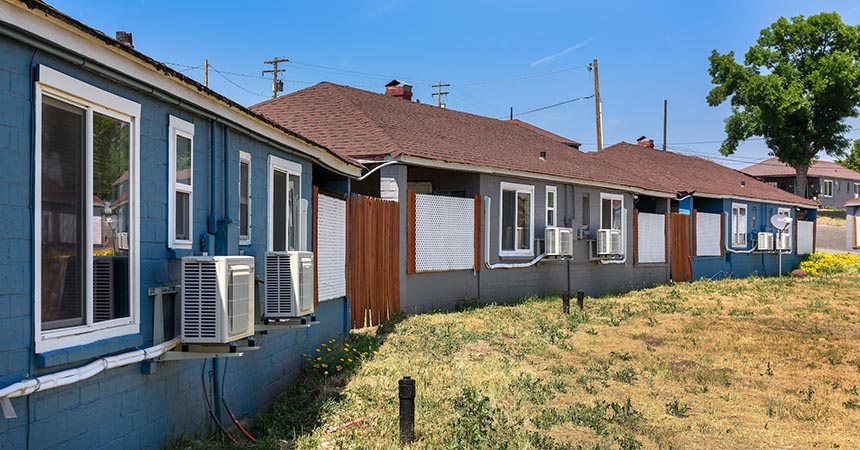
Following the deadly heatwave in the summer of 2021 – during which over 100 Oregonians died of heat-related illnesses, many in their own homes – the Oregon Legislature passed Senate Bill 1536. The legislation seeks to increase access to cooling spaces, in part through new Oregon Health Authority programs, requiring new residential housing to provide adequate cooling facilities and establishing a Heat Pump Deployment Program.
The bill directed the Oregon Department of Energy to develop the Oregon Cooling Needs Study to provide an assessment of cooling needs for residents in housing that’s most vulnerable to the impacts of excessive heat. That includes publicly supported housing, manufactured homes and recreational vehicles being used as housing.
Published in December, the study found a significant need for more cooling equipment in various housing types, with 58% of those surveyed reporting they don’t have adequate cooling equipment.
The study used a new tool from Multnomah County that uses geospatial, climate and demographic data to identify communities most susceptible to extreme heat and direct resources there. The tool considers factors like sensitivity to heat, exposure to extreme temperatures and adaptive capacity (the ability to adapt to climate change to mitigate potential harm), facilitating both immediate and long-term resilience strategies such as cooling shelters and urban greening initiatives.
The study shows needs vary across the state. Each county was given a score from 1 to 100 to show how vulnerable it is to extreme heat. The average county heat vulnerability index is 57. The counties with the highest heat vulnerability are Morrow (68), Multnomah (68), Malheur (67), Marion (64), Umatilla (62) and Wheeler (61). Lower ranking counties included Clackamas (50), Deschutes (50), Clatsop (51), Benton (51), Tillamook (52), Lincoln (52) and Union (52).
The study also identified social and economic barriers residents face in accessing existing resources to get cooling. Only 22% of those surveyed had used existing cooling, weatherization or utility bill assistance programs.
Addressing the state’s cooling needs will be expensive. The study estimated the cost to provide adequate cooling equipment for all Oregonians to avoid the worst effects of extreme heat events is $604 million. The estimated cost to provide comprehensive cooling – permanently installed equipment to properly cool the full living space in each housing unit – is $1.08 billion.
Along with commissioning this study, SB 1536 also created an incentive program to encourage multifamily property owners and managers to create on-site cooling spaces for residents. Energy Trust is helping deliver the Landlord Provided Cooling Spaces Initiative, which in many cases covers the full cost of portable or non-portable equipment.
“Cooling spaces are lifelines during times of extreme heat,” said Themba Mutepfa, Energy Trust Landlord Provided Cooling Spaces program manager. “Providing these cooling spaces isn’t just about comfort; it’s about safeguarding public health and well-being while creating more resilient communities.”
Energy Trust also offers incentives for high-efficiency cooling systems for single-family, manufactured and multifamily homes.
